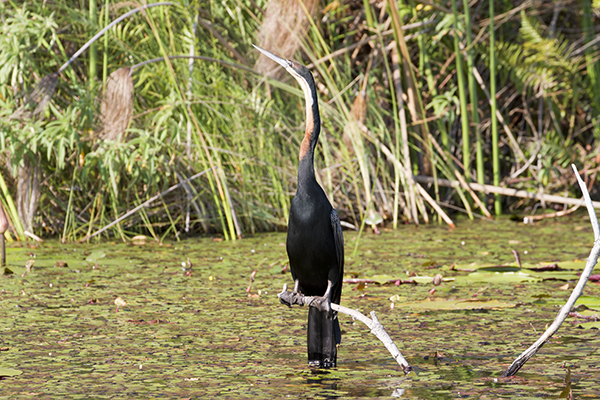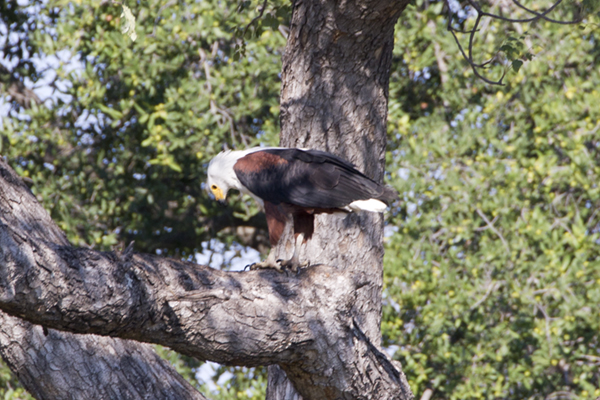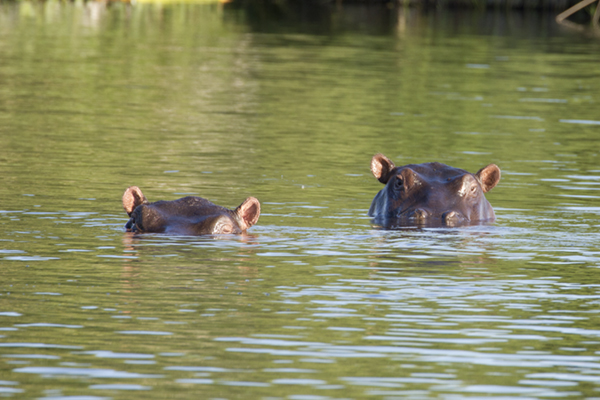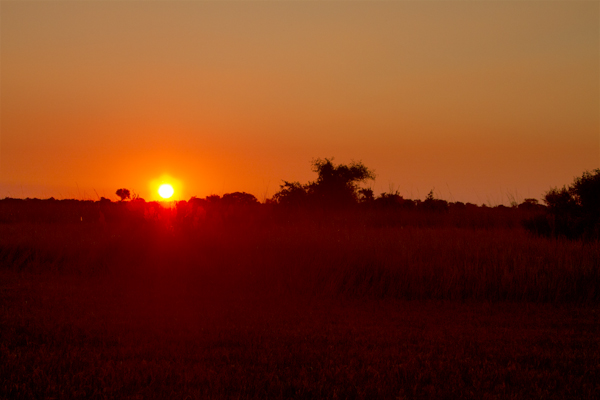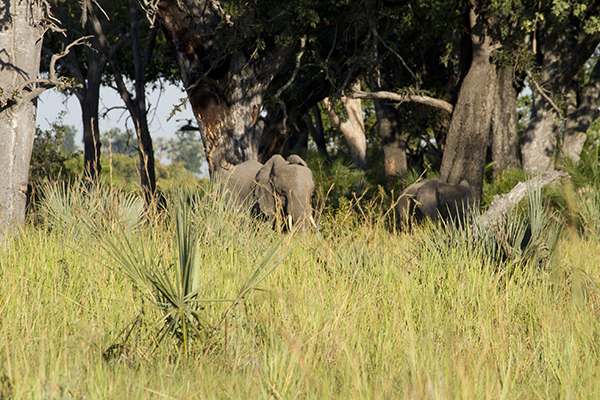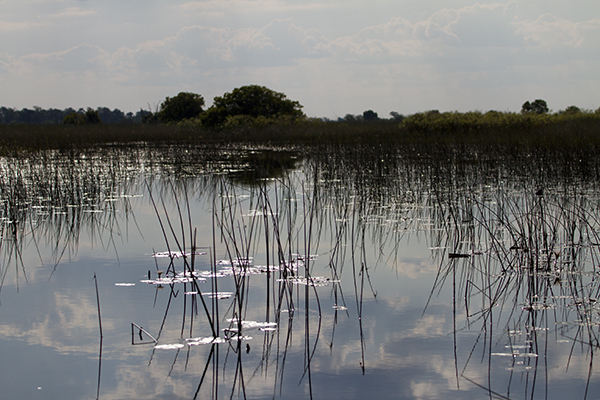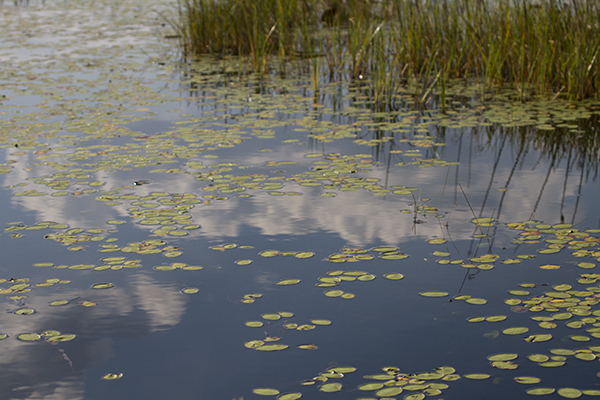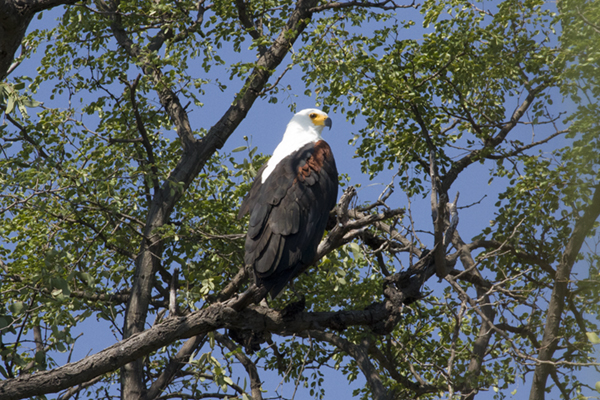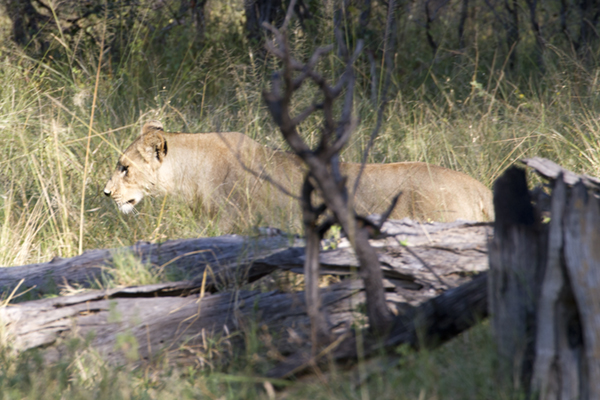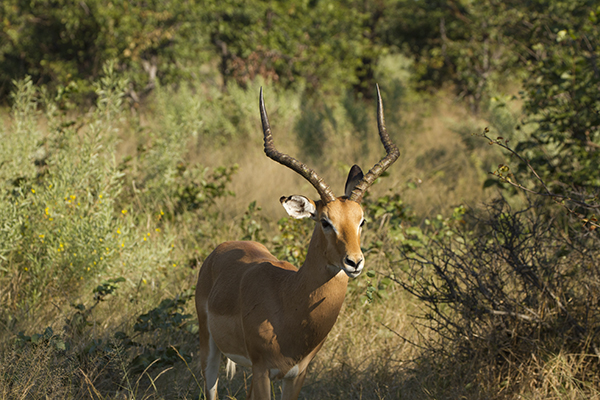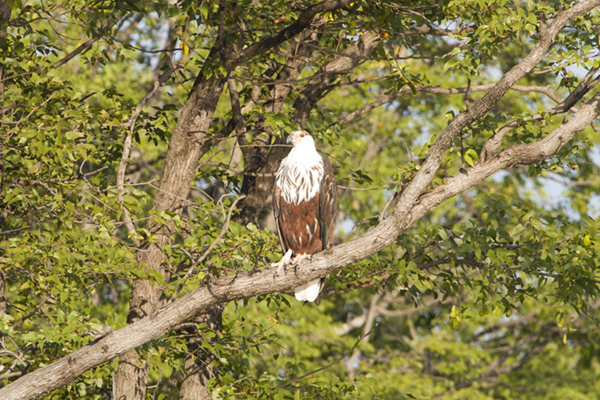As I mentioned in the last post, we moved from the desert to the top (North side) of the Okavango Delta. I had heard a lot about it in various Nature Documentaries and was fascinated by the thought of a huge river that opens up into a delta yet never reaches the sea. The water that flows from the tropical forests of Angola, rich with flood waters from the rain falling there, penetrates into the soil and evaporates before it can reach any major body of water. In Maun, where this journey started, there used to be two seasons, the dry and the wet, not because of rain, but because of the water from the delta. Water would flow for 6 months than stop and another six months later, would come back. There was wild celebration each year when the flood waters reached Maun again.
Things have changed about 6 years ago, I was told, as a result of the earthquake which created the “Boxing Day” Tsunami in December 2004 in the Indian Ocean. The Great Rift Valley, which cuts Africa in two and extends all the way into Zambia and Botswana is actually at the other end of the same tectonic plate that disappears under Indonesia at that end of the Indian Ocean – it is not, therefore, totally unrealistic that such a huge event at one end, had a small consequence at the other. Since then, rivers that had not flowed in 30+ years have started to flow again on a seasonal basis and Maun has seen more water than usual. There have been changes to the Chobe River as well, but I will get into those later, when we visit that area.
We arrived at noon and after lunch, some of us went on a boat trip to the Hippo Pool – I wonder what animals we will see there…
This is an African Darter. It took me a long time to remember the name (I am not sure why) and to also be able to recognize the difference between the Darter and the Cormorant – not until some one explained it to me clearly on a boat trip on the Chobe River. As Darters and Cormorants are often seen together, at first I was not sure which was which, but this is definitely a Darter – it spears its fish and therefore has a long, sharp-end beak.
We saw an Fish Eagle surveying the land. Soon after I took this picture, it flew away, majestically…
We were slowly travelling in small canals, with all sorts of grasses and reeds around us, especially papyrus. The water was very calm in most places (not really flowing) and the reflection of the grass in the water was almost perfect at times.
We ran into the same Fish Eagle just minutes later, in another tree. It has caught a pray and was eating it as we watched.
We eventually arrived at the Hippo Pool, and agreed that it deserved its name. There were at least 6 large groups of hippos in this one area. We observed this mother and baby just a little remote from the rest and were told that this is probably a male baby and the mother needs to protect him from the alpha male of the family …
A “Darter Tree” – no, they do not grow on them, but seem to favor this particular tree.
As I said, there are several groups of hippos in the pool, just a larger section of one of the many rivers we saw. The hippos are not very interested in us and continue to bob up and down, showing only nose, ears and eyes.
Occasionally, one or two show just a little bit more, but for only a very short time.
The fishing must be good around here. As well as Darters, there are also several White Egrets
… an openbill stork …
… and a Grey Heron.
But the sun is starting to come down fast and we need to head back towards our lodge. Once again, we have to negotiate narrow passages that all look the same. I am glad that I do not have to decide which way to go.
My instincts remain good as I thought I recognised this part as being near the airport – since I thought we were going back to the lodge, I was looking for the ‘exit’ we had taken in the morning. What I did not realise is that we were heading the other way, towards the airport, for our ‘sundowner’ – traditions are what they are…
The other part of our group was already there, drinking beer and wine. They had gone on a canoe ride, what I will be doing tomorrow afternoon.
And we watched as the sun came down. You can be grateful that in this part of the world, the sun comes down rather quickly and so I cannot bore you with dozens of different photos as it slowly approaches Earth.
The next morning, as the sun was just coming up, I took a panorama of the view from the lodge.
We went for a ‘walk’ on a nearby island with several guides. This was a unique opportunity on this trip to see animals without the protection of our vehicles. We saw an elephant as soon as we arrived on solid ground.
Yes, there is an elephant in the picture above – the grey blob in the middle of the photo is a pachyderm walking towards us. It is a lot more difficult to see when you cannot observe the motion.
We were able to get a little closer and noticed that there are actually two elephants.
We ran into a group of Impalas. They are very shy about people on foot; however, they also seem to pay a lot more attention to us and therefore we tended to see faces instead of rear-ends…
There was also a family of baboons near the impalas
And the two groups eventually meet…
There are even Warthogs around. Notice the Impala on the left – only one horn, must have lost the other in a fight which is why now he has to stay with the Bachelor Group, without a harem.
After a while, something must have spooked the Impalas as they ran away rather quickly
We continued our walk, in very nice scenery, but without meeting more animals.
It was still surprising to me to be amongst such lush vegetation right after having left the Kalahari Desert.
We did see a local Swift – there were a lot of them near the lodge also.
After lunch, I decided to take a few pictures around the lodge. Palms, water lilies and reflections of clouds…
More reflections
A tiny Malachite Kingfisher hiding in the reeds.
As we headed towards our Mokoro, the local dug-out canoes, we crossed more wetlands where one is not sure where water ends and land begins.
This is the Pied Kingfisher, larger than the other one and usually more in the open.
They still do not stay around too long as we approach. I was lucky to get this one as it flew away too.
In the canoes, we were actually sitting very low, below water level and that gives you a totally different perspective.
The canoes are moved by using a pole to push against the bottom of the water – this area is not very deep. Since they do not generate much waves, the water surface is essentially unaffected by our passage and reflections remain great.
Judy and Raymond with their ‘poler’ taking a rest
We are able to move very close to everything, including this very small frog, no bigger than my thumbnail
We called this one the ‘helicopter’ dragonfly as the wings look like helicopter blades when at rest.
Once you know what to look for, it is easy to see more of the same. Here is another tiny frog, with very different colours.
and more of the same
I suspected at first that these were plastic frogs, as they were absolutely still – however, we did eventually see one of them move, so I guess they are real.
It’s late afternoon and time to head back to the motor boat first so that we can go to the selected place for sundowner…
The moon is almost full and therefore clearly visible in the sky (and in reflections in the water as is the case here) as the sun starts to go down
Not sure what I need to say here…
Papyrus glowing in the evening light
We are actually ‘parked’ on the side of a large pond, with the sun slowly setting in front of us and our guides and polers resting after the hard effort.
Coke anyone?
As the other boat joins us from the Hippo Pool …
… it creates the perfect set of ripples to give more dimensions and movement to the sunset
… which we enjoy from our priviledged spot, with wine, beer and snacks.
Stanley seems happy – he has been able to rest for two days as the local guides were taking care of us.
By now the water is calm again and the sun is almost completely gone.
The next morning, I discover that two Swifts have decided to build a nest near my ‘bungalow’. I observe them as they shuttle back and forth with mud to lay the first foundations of their future home.
I found where they went for mud – a wet patch on the lawn that has been watered overnight.
There is also a Squirrel active in the morning, before the heat of the day becomes too high.
But it is already time for us to leave Xugana Lodge and head for our next camp in the Moremi district of the Okavango Delta. We will get there by boat, expected to take most of the day. We see another Malachite Kingfisher.
And a Fish Eagle
A Darter at work
When we arrive at the next lodge, but not yet where we will be sleeping, Bata is waiting for us with the two Landcruisers. While we are getting all our belongings into the vehicles, we see an elephant taking a bath.
There is a platform not too far where we can get a better look. While we pay attention to the one elephant, another came from behind us only meters away
They eventually ended up together in the water, but I am not sure that the first one was happy to share his ‘tub’
As we drove to camp, we ran into three lionesses. This was a brief encounter, but enough to realise that they did not look very healthy – Lions are family oriented, but can also be very cruel. Once a member of the family no longer carries his or her own weight, it gets cast away to fend for itself – this is probably what happened to these lionesses. One of them had a limp which means it could not contribute to the hunt.
A beautiful Steenbok
An Impala up close
A female Kudu
Your guess is as good as mine
and a Snake Eagle, I believe this is a juvenile.
No sunset pictures today …
We will be in Moremi for two nights, back into our tented camp! That will be the subject of the next installment.
(31989 Page Views)

